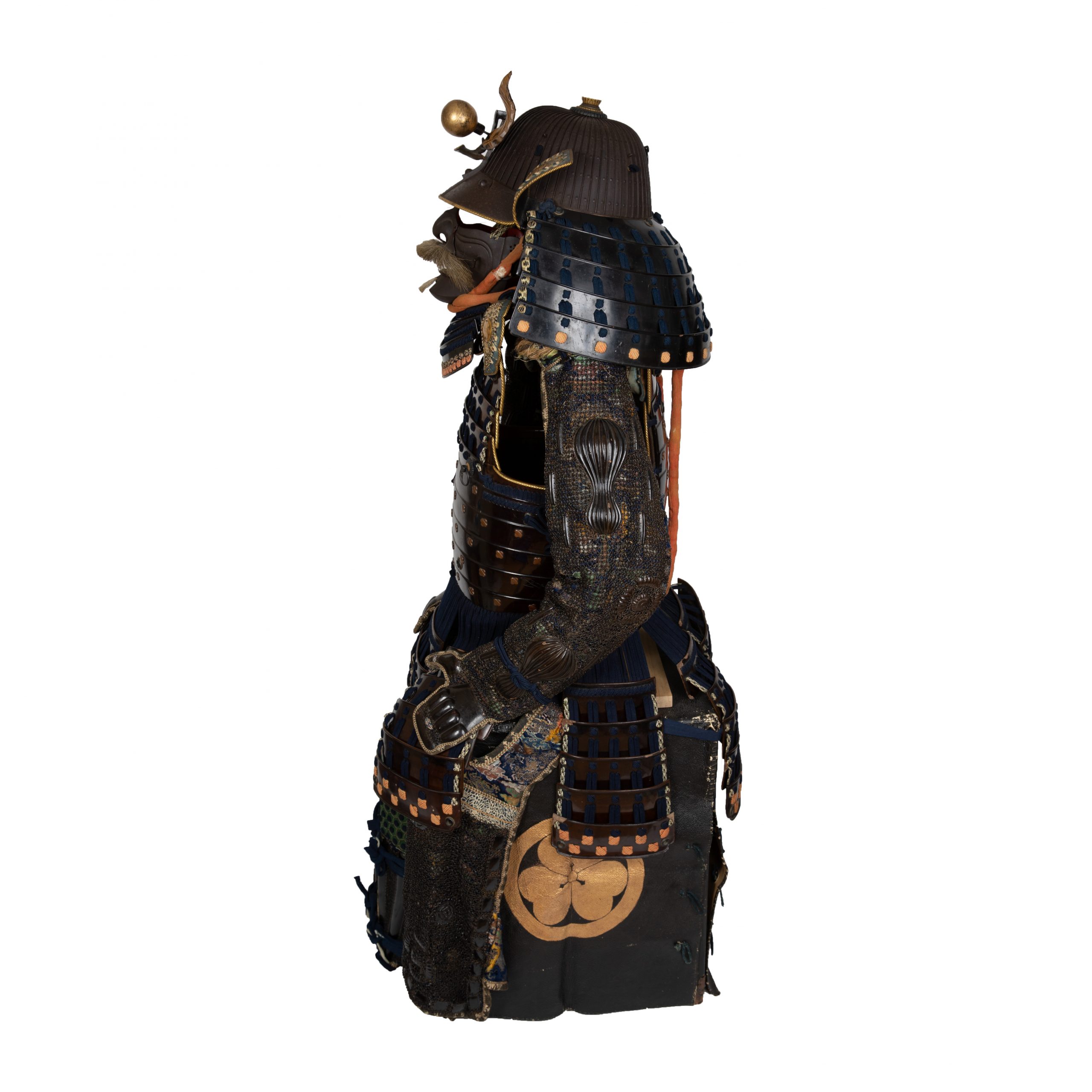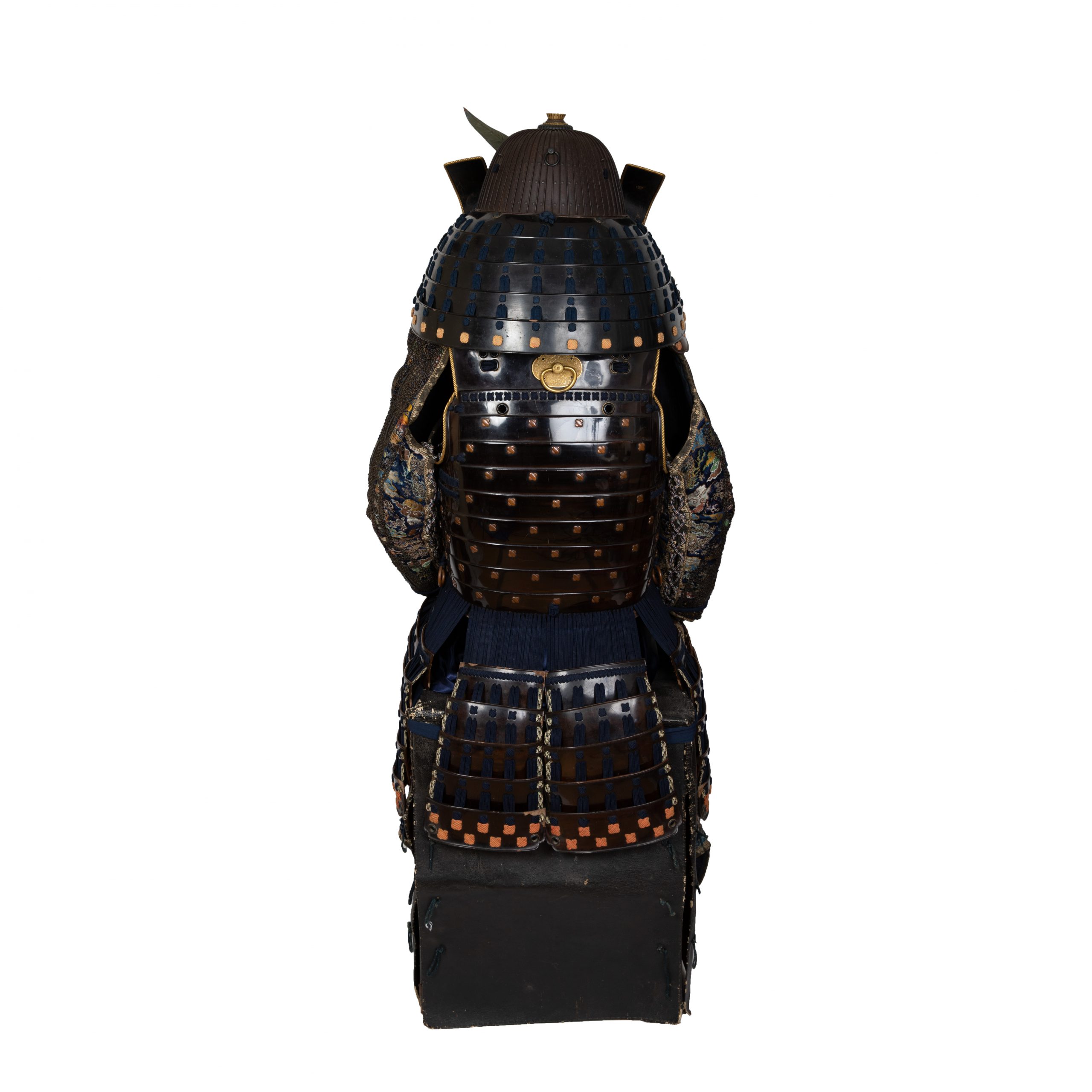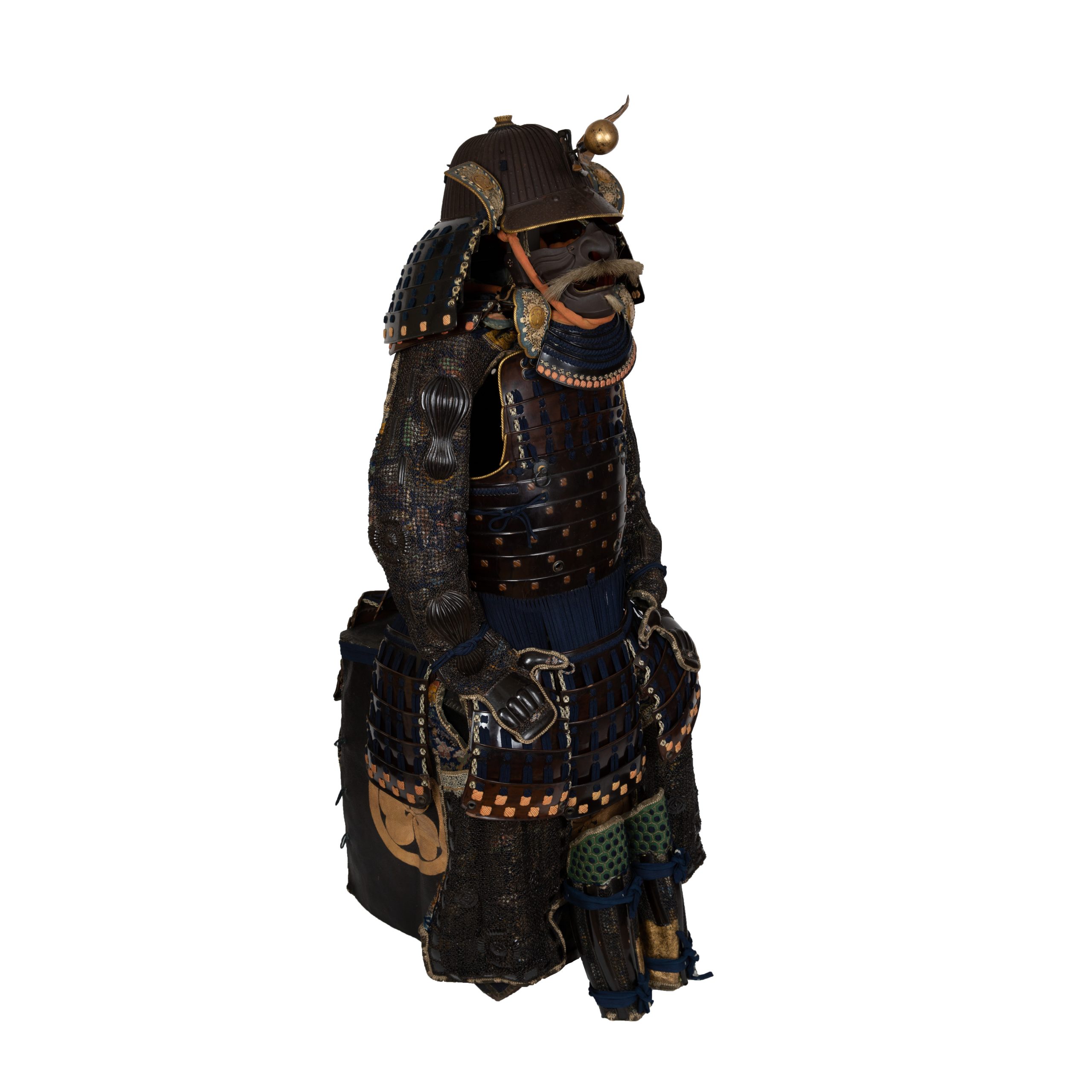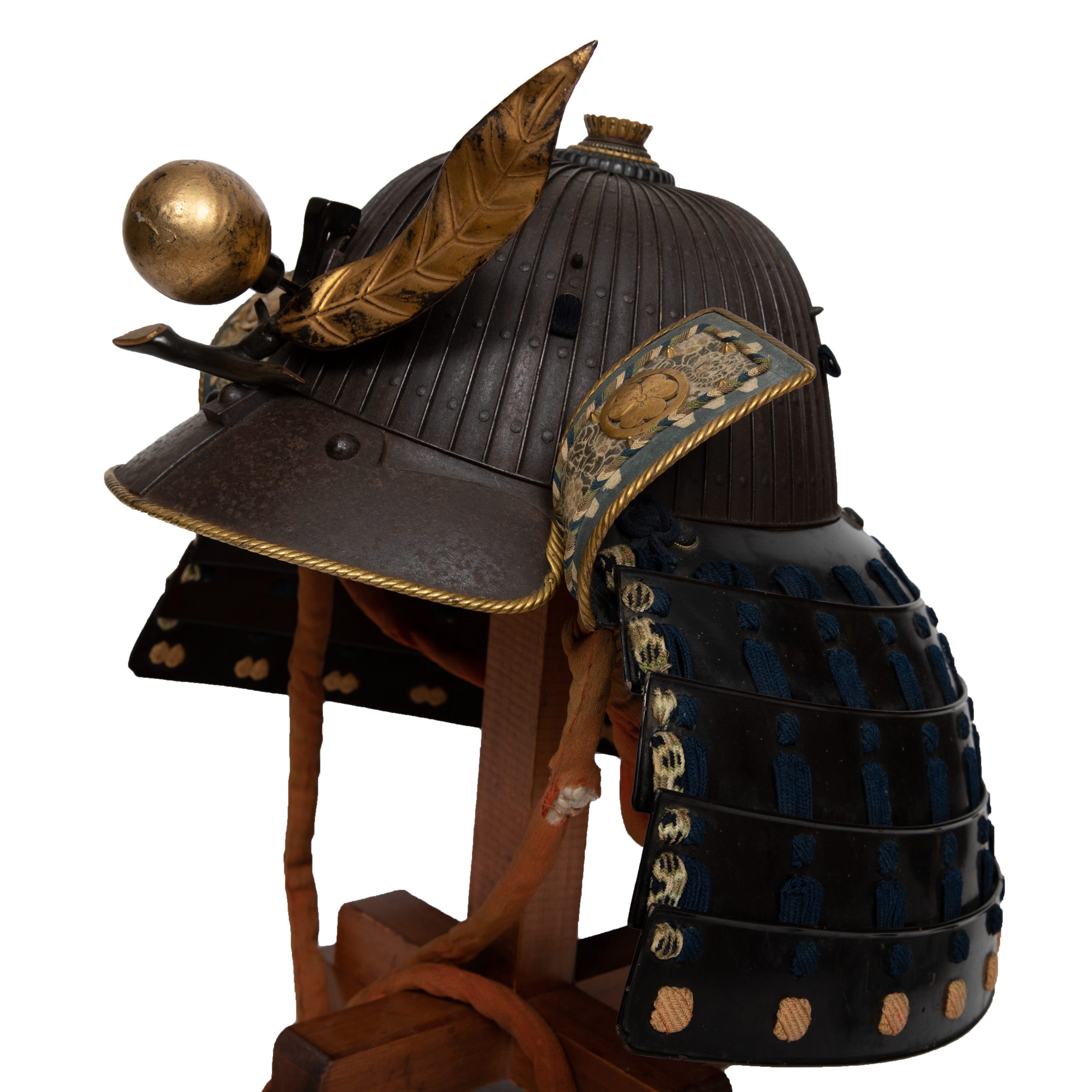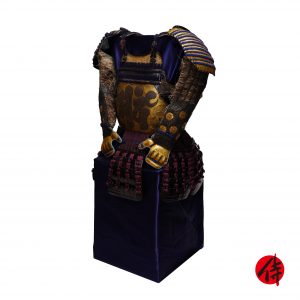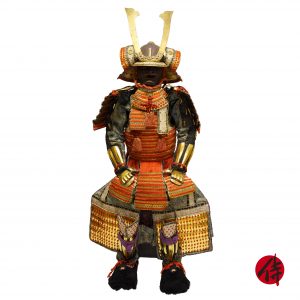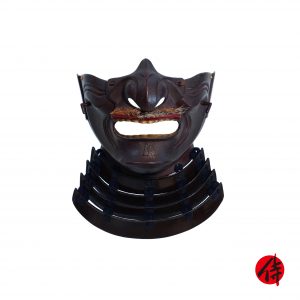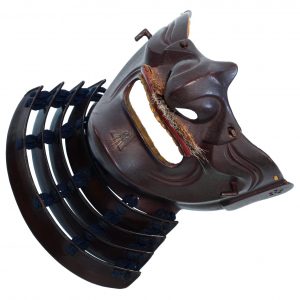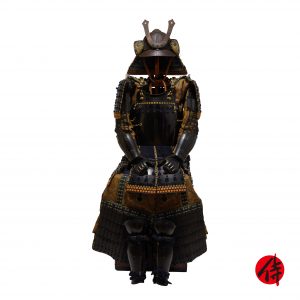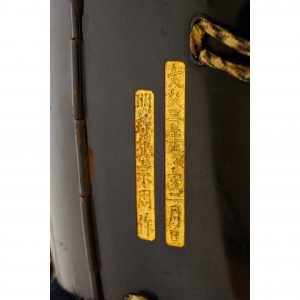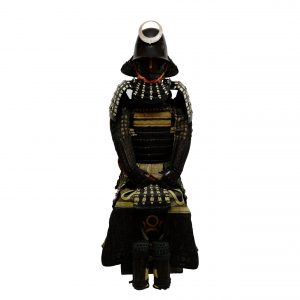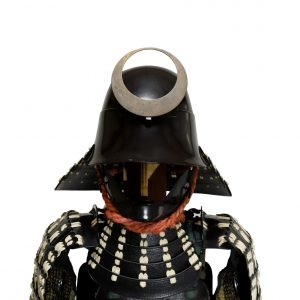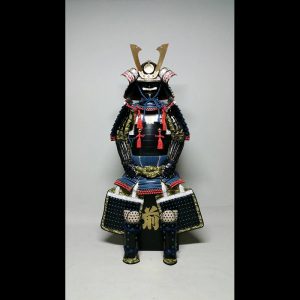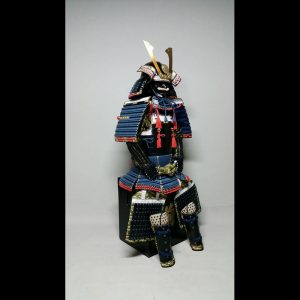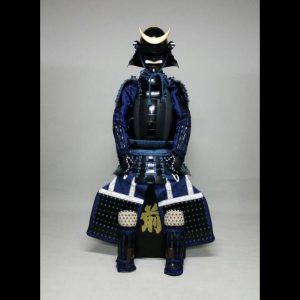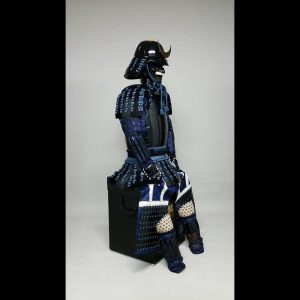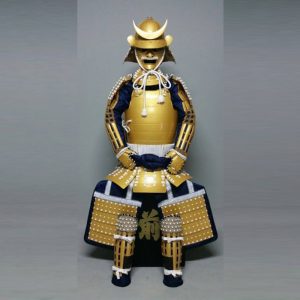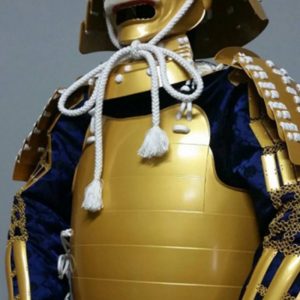Antique Edo Period Brown Lacquered Samurai Armor (A-18)
Period: estimated the middle or late of the Edo Period
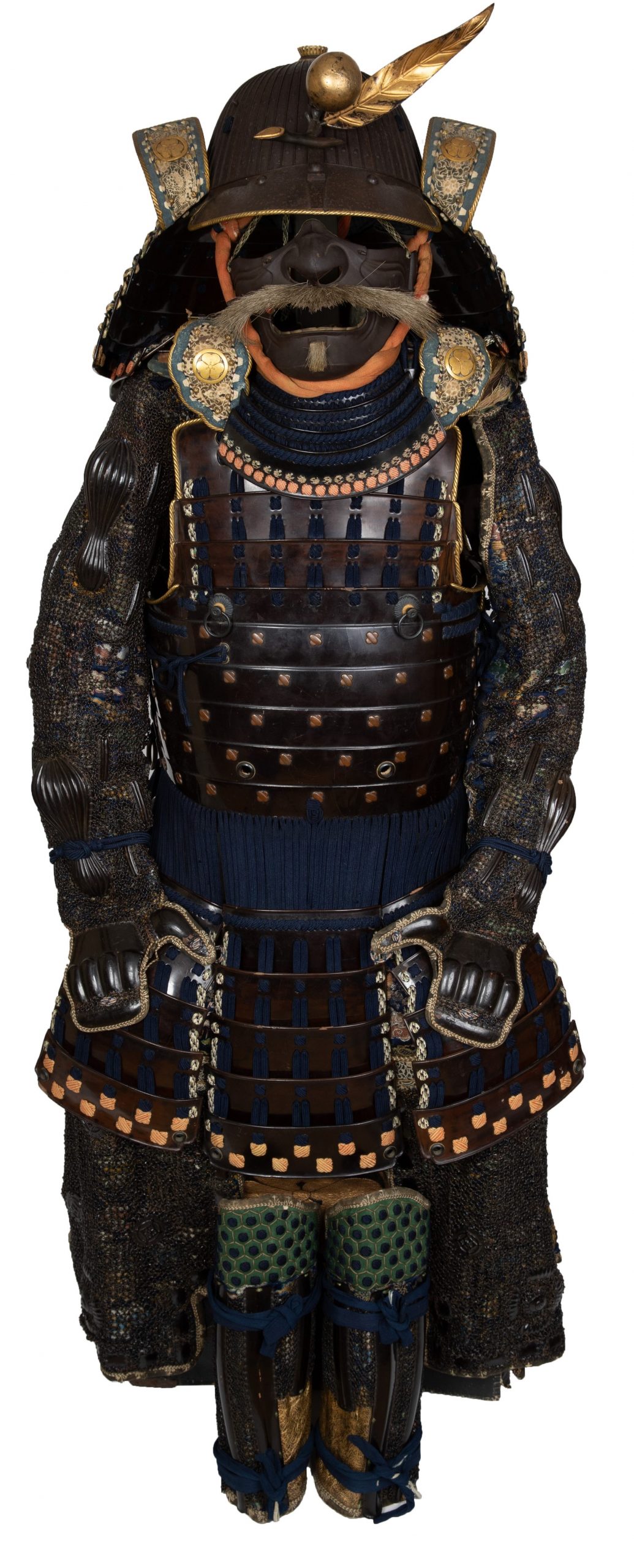
Kabuto (helmet)
■Helmet bowl: Suji Kabuto
The Kabuto (兜, helmet) is a protector for the head. When people started using the Kabuto, it was initially designed for practical use. However, the principal purpose of its design has changed with time; Samurais tried to express their dignity, personality, or religion by wearing the characteristic design Kabutos. According to a theory, these unique designed Kabutos were made from the late Muromachi period to the Edo period. This type of Kabuto is categorized as the Kawari Kabuto (変わり兜), and a variety of materials were used to create them. For example, animal fur, seashells, plants, and papers were used as materials for decoration.
Here we would like to introduce to you a little bit more about the history of Kabutos. Before the Kawari Kabuto’s production, the Suji Kabuto (筋兜) has appeared during the Nanbokuchou (南北朝, 1337-1392) period. At that time, the tactic was gradually changed from the piggyback fight style to battle with the Tachi (太刀) sword and the Naginata (薙刀, Japanese halberd) on the ground. Therefore, there was a rise in demand for the weight saving of the Kabuto. Also, in order to turn the attack by swords, a new type of structure was invented; it is the Suji Kabuto (筋兜). Its form slides swords’ attacks when weapons hit the Kabuto. It is said that the production of the Suji Kabuto prospered in the Muromachi (室町, 1336-1573) period. We estimate this helmet is one of these Suji Kabutos made in that tendency in the Edo period. It has 62 Stripes in this helmet, meaning 62 small iron plated are connected. It is called Ryokujyu Ni Ken Suji Kabuto. Rokujyu Ni means 62 in Japanese. The surface is Tetsusabiji style, which only applied lacquer for paint base for the iron not to get rusty. It looks less shiny than normal lacquered surface.
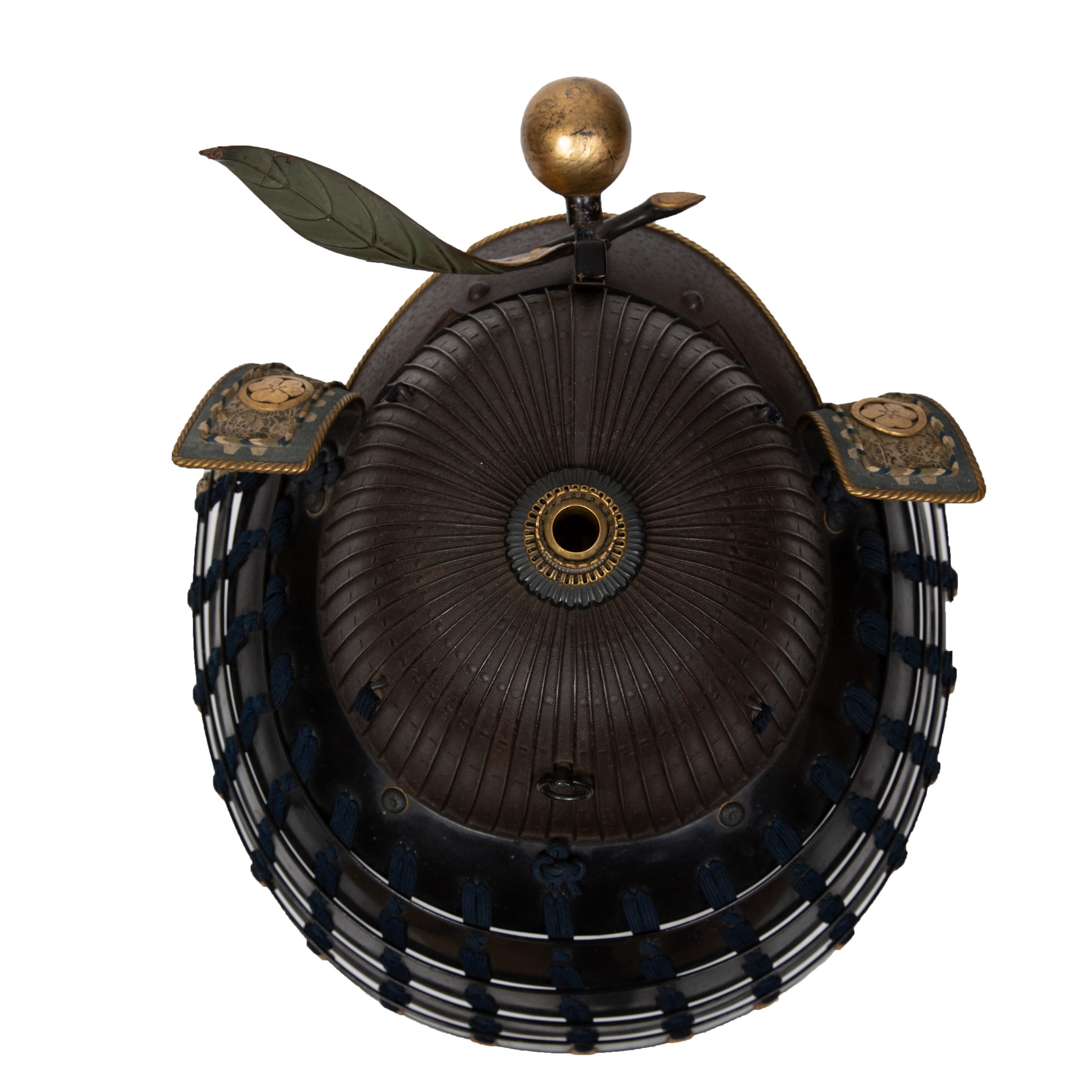
■Shikoro (side neck guard):
Black lacquer iron plates laced with navy color threads.
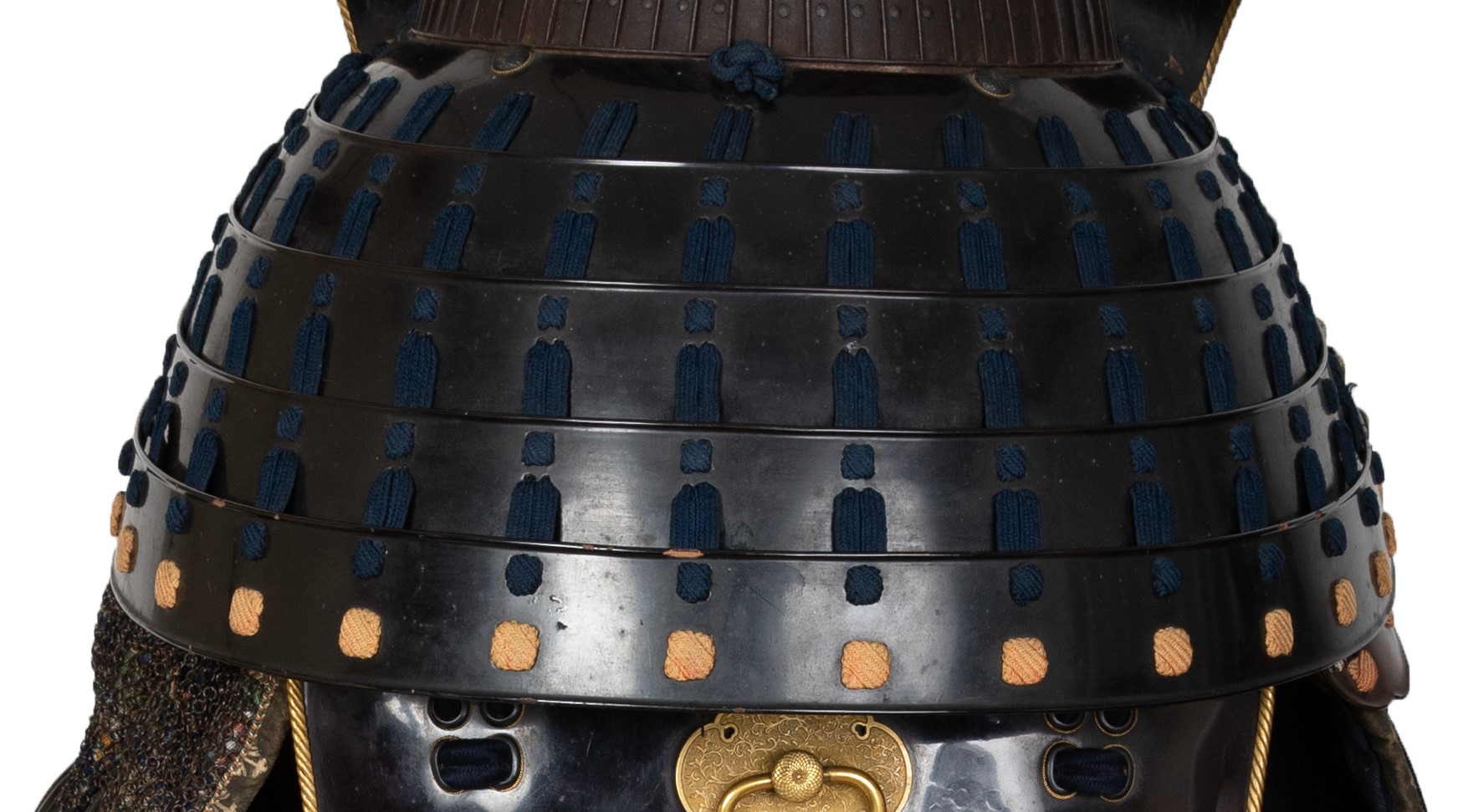
■Fukikaeshi (side neck guard): Maru-ni Katabami Mon
The Fukikaeshi (吹き返し) is both ends of a helmet. It protects the face from swords and also shows its beautiful workmanship. Family crests are sometimes designed on this part, as seen in this work. You would find a golden crest on the Fukikaeshi part. This design is called the Maru-ni Katabami (丸に片喰) pattern, which describes a circled Katabami (片喰). It is categorized as a type of Katabami pattern. The Katabami is a plant whose leaf has a heart mark shape. Also, it has strong vitality that does not wither even if it is stepped on. People thought this plant design represented the prosperity of descendants; therefore, many Samurais loved this pattern.
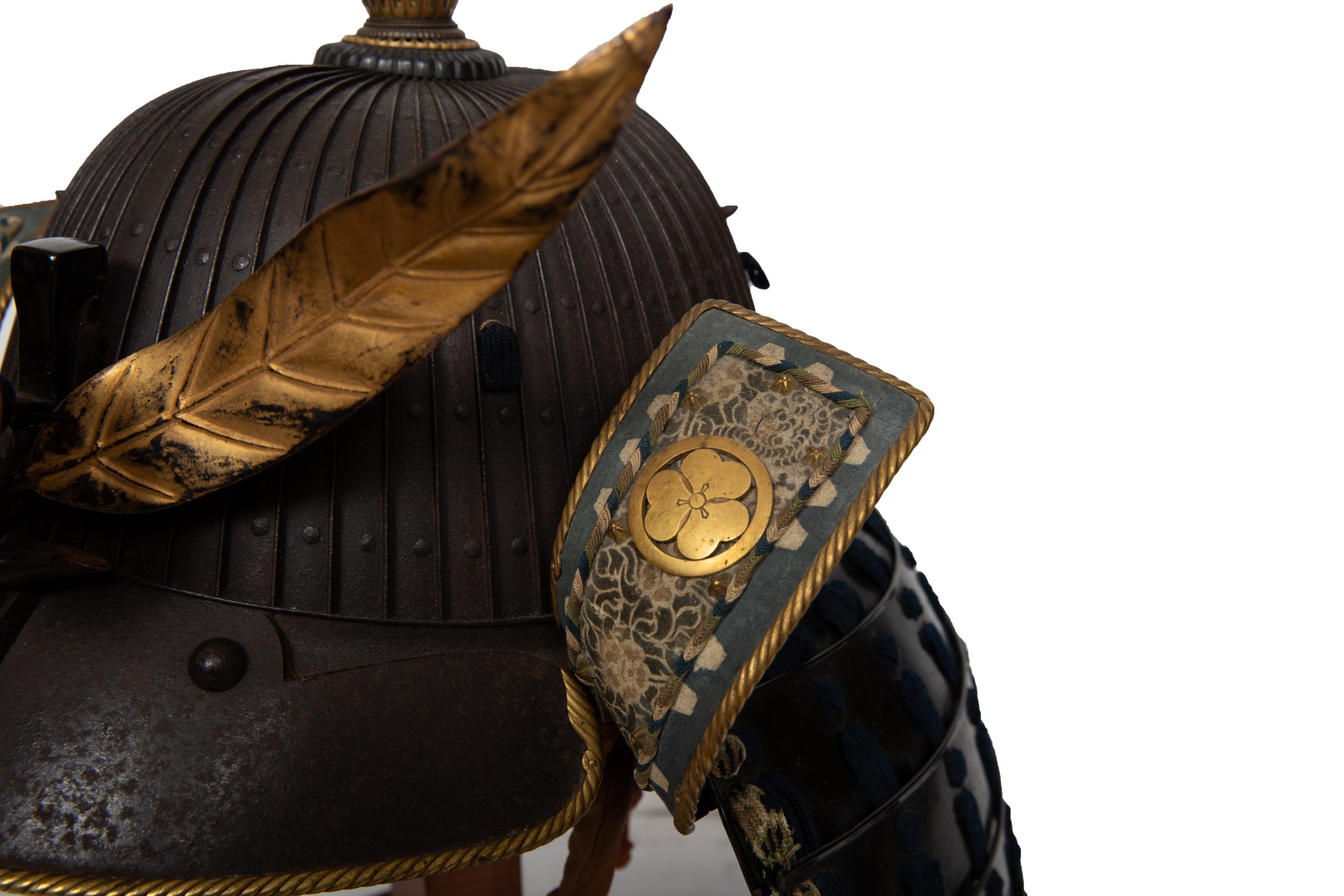
■Menpo (face guard):
Iron mask with a mustache. This type of Menpo is called Retsusei Menpo (烈勢面頬). It represents the angry face to intimidate enemies.
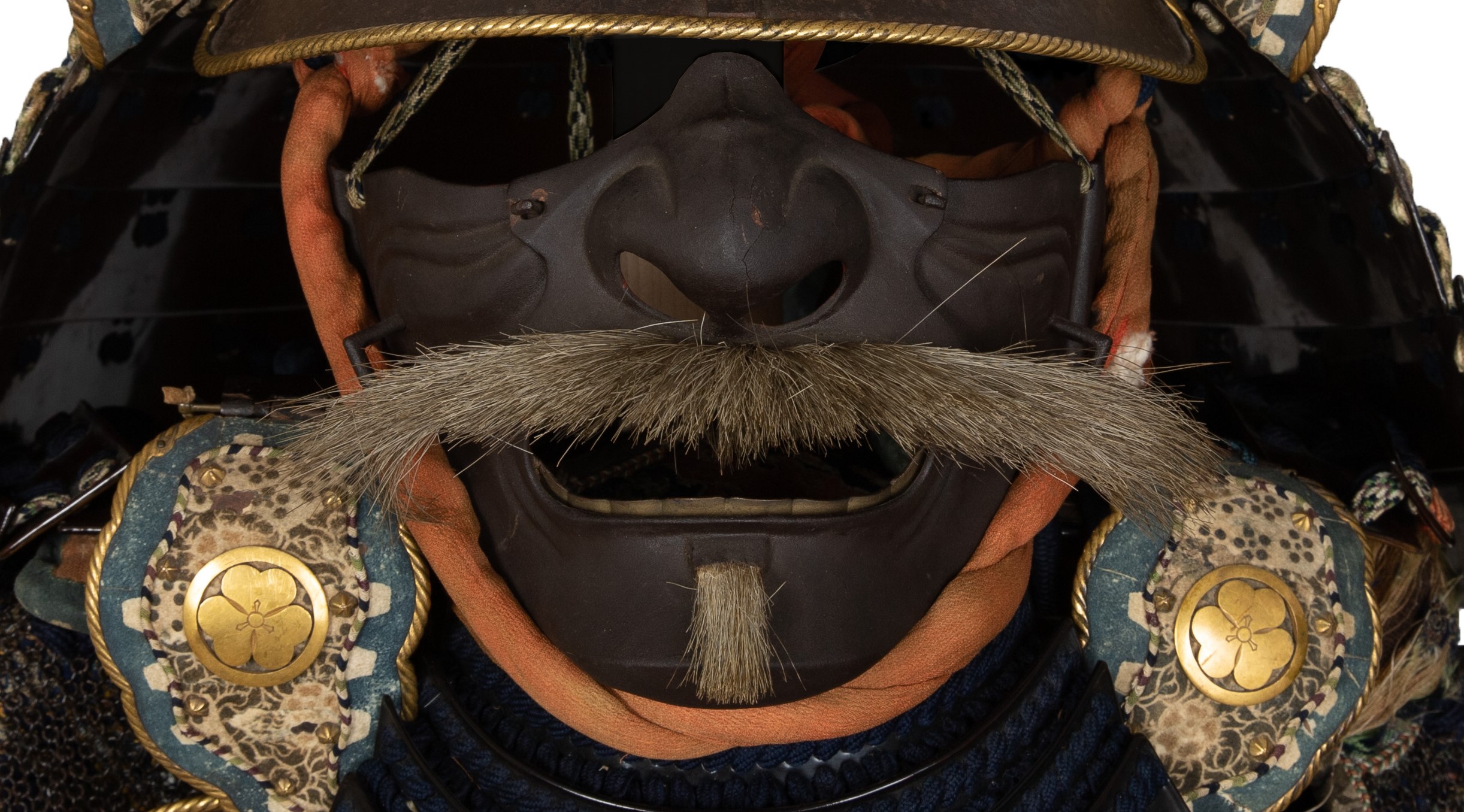
■Gyō-yō (metal plate):
The Gyō-yō (杏葉) is a metal plate attached to the Katagami (肩上, a part that hangs over both shoulders of the torso of an armor). Please note that one of this armor’s Gyō-yō’s metal fitting is broken. As you see in the picture below, it is necessary to tie it with a string. We will be happy to have this part repaired without any additional cost.
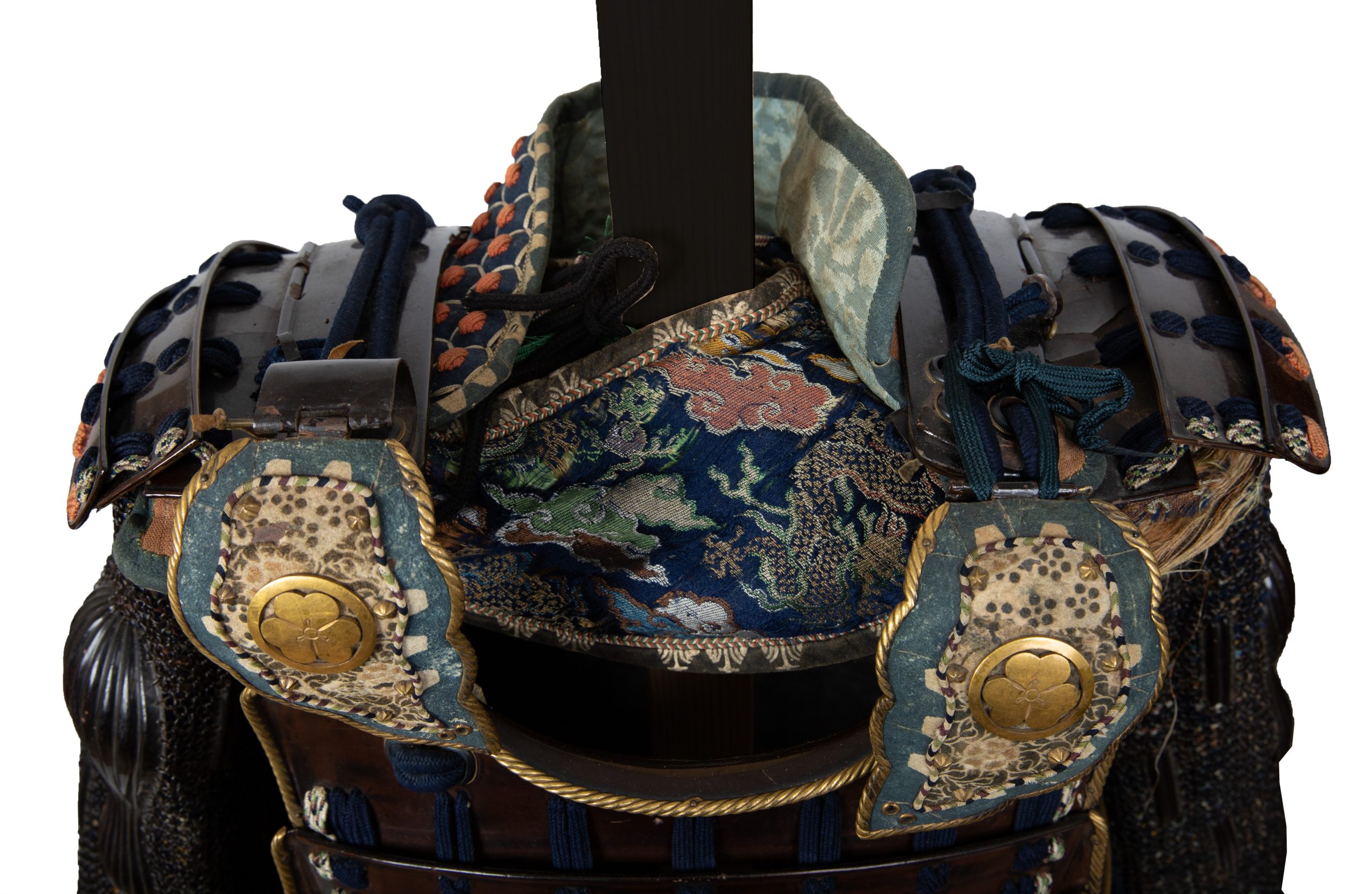
■Maedate (Front decoration): Nanten
We guess that the motif of this helmet’s Maetate (前立, front decoration) is the Nanten (南天, nandina) due to its fruit and leaf shapes. It is colored with gold and has a bright appearance. People have regarded the nandina as an auspicious plant since ancient times. Its Japanese name Nanten has the same pronunciation as the word Nanten (難転); Nan-ga Tenjiru (難が転じる). It means “change misfortune to good fortune.” Based on this wordplay, it is said that many Japanese people grew this plant, believing it would protect them from fire or evil spirits in the Edo period.

Armor
■Do (Cuirass): Nimai Do
Nimai Do is a kind of cuirass for Tousei Gusoku (developed armor style). Nimai Do was named after the fact that Nimai means two plates, and Do means torso in Japanese. Instead of using a large number of small lamellar plates called Kozane, this cuirass used large rectangular shaped iron plates riveted.
The body armor part can be separated into two pieces and connected with a hinge. Typically, the hinge is located on the left side, and you can tighten this cuirass on the right side.
■Decoration on body armor:
■Kusazuri (skirt of plates attached to the cuirass):
Lacquered iron Kusazuri laced with navy threads.
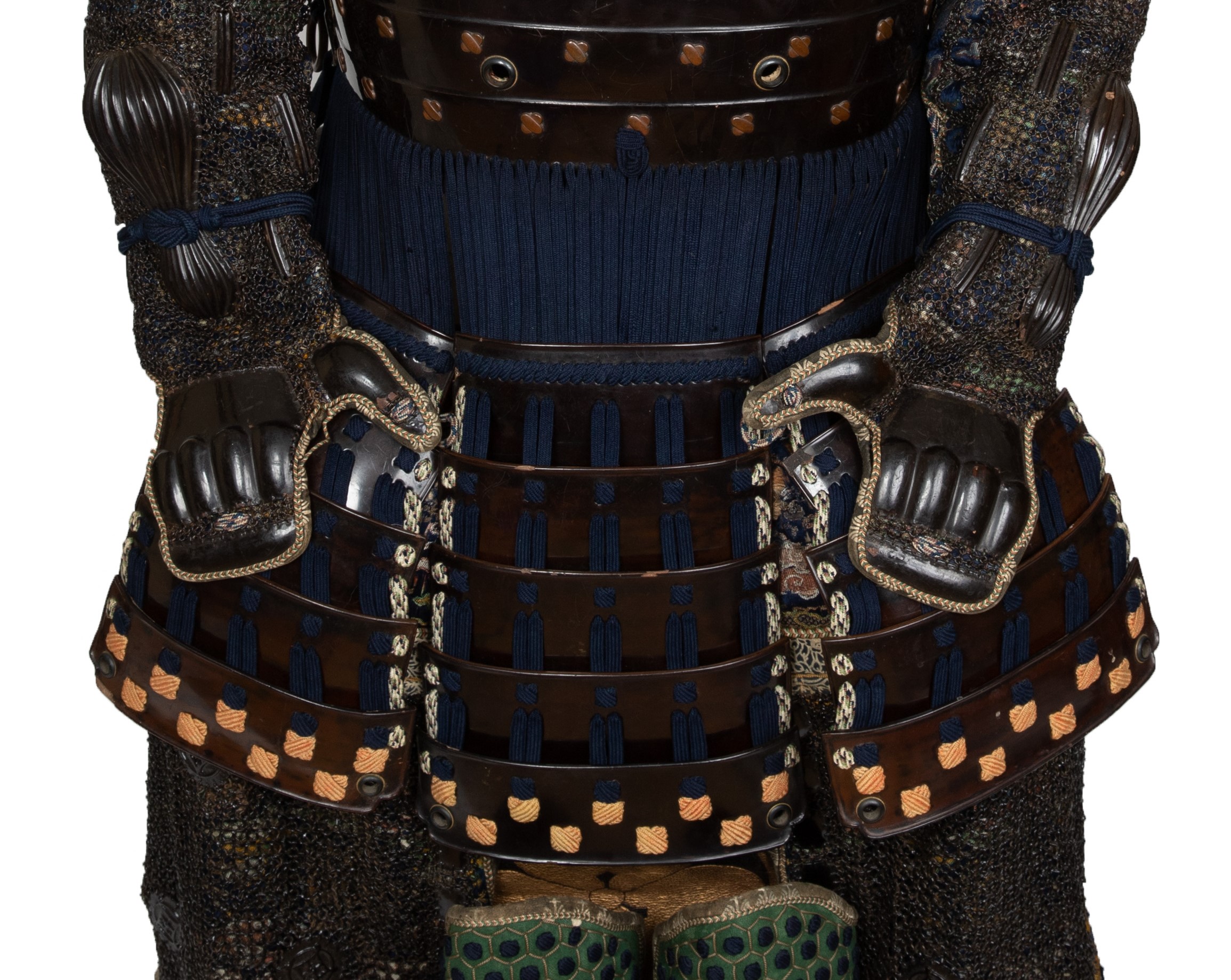
Small parts
■Kote (Armored sleeves):
Intricate iron chain mail with silk. You would find several Hisago (瓢, gourd, generally called Hyoutan in Japanese)-shaped metal plates are attached to each Kote (籠手). Since ancient times, Japanese people have appreciated this plant design as an auspicious motif. As mentioned above, the Hisago is written as “瓢,” which can also be read as “Hyou.” Therefore, three Hisagos were considered the San-Byoushi (三拍子, triple time, 拍子 can also be pronounced as Hyoushi). And people compared six Hisagos to Mubyou Sokusai (無病息災, be in perfect health). It is because the word “病 (Byou)” has the same pronunciation as “瓢 (it also can be read as Byou).” Also, the Hisago pattern represents success in business and the prosperity of descendants as this plant produces lots of fruits. These meanings tell you how Japanese people love this design based on its acting superstitiously for good luck.
Now let’s briefly touch on an example of the relationship between the Hisago motif and the Samurai culture. Toyotomi Hideyoshi (豊臣 秀吉, 1537-1598) is one of the most famous Samurais during the Warring States period (1467-1615). According to a theory, his Umajirushi (馬印, a massive flag raised near the general Samurai on the battlefield) was the Senari-Byoutan (千成瓢箪). He was given the Hisago motif for his Umajirushi from Oda Nobunaga (織田 信長, 1534-1582). It is said he added gourds every time he won the battles. We imagine this plant motif has been treated as an auspicious symbol and cherished among Samurais.
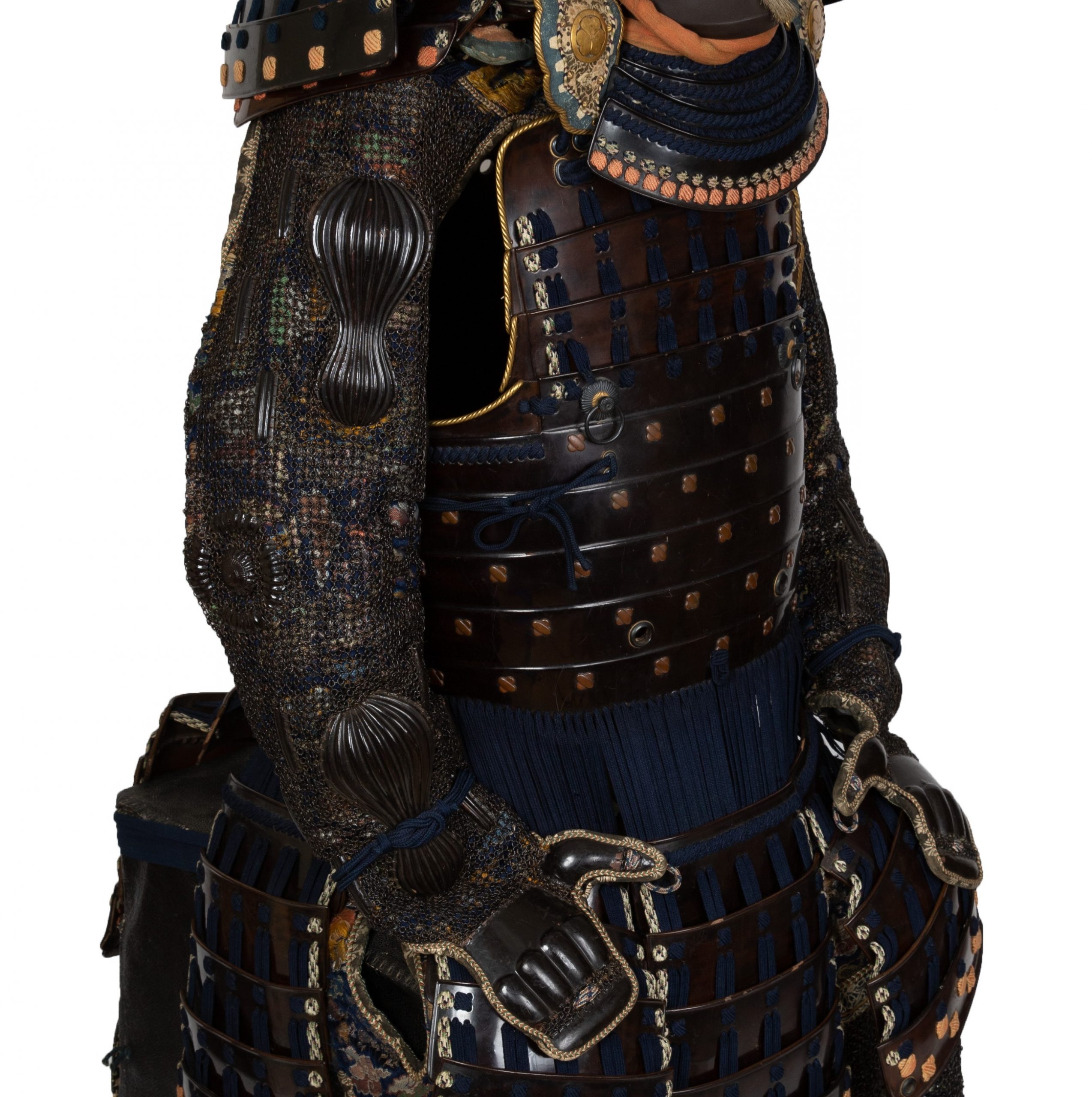
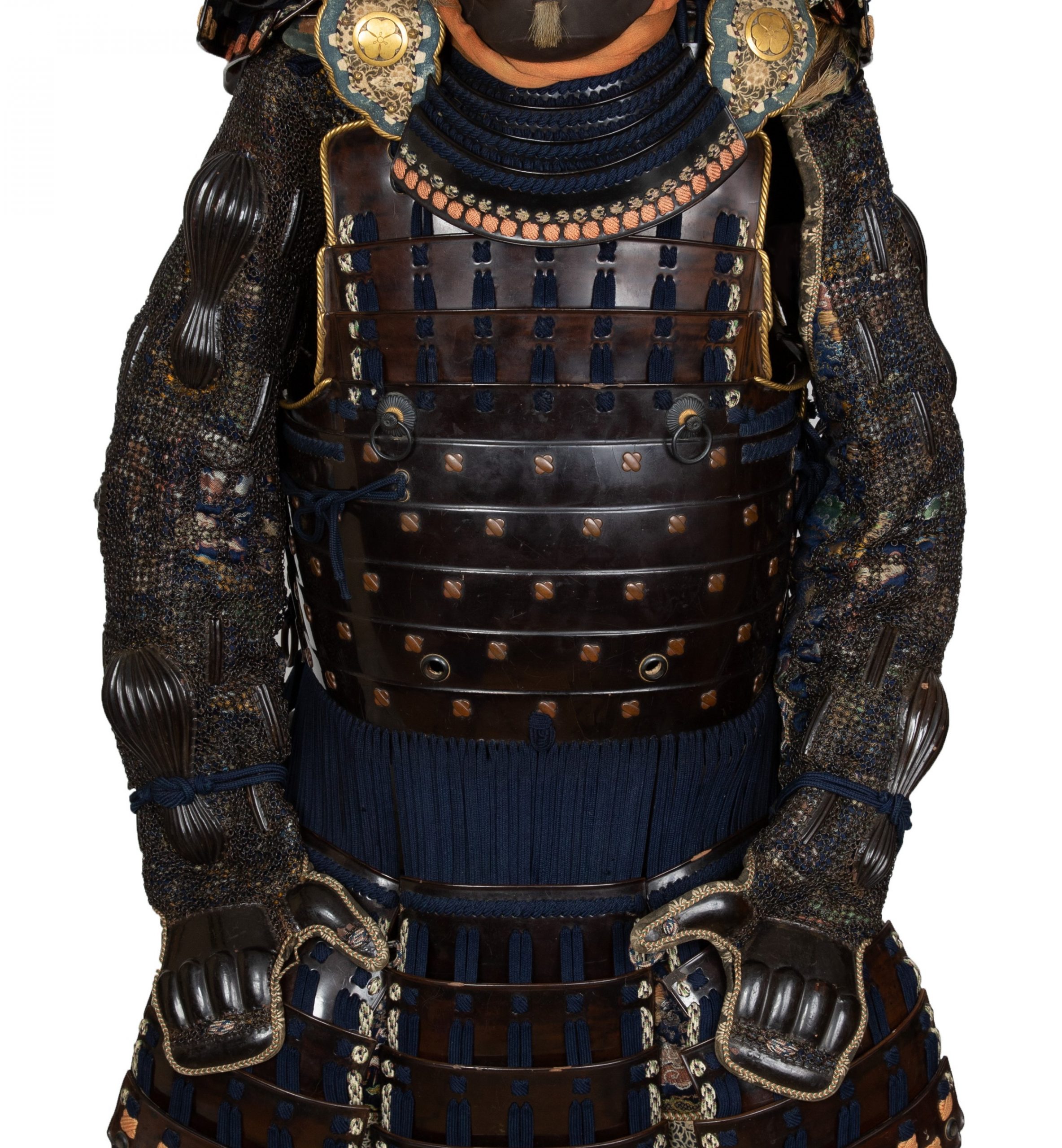
■Haidate (thigh protection):
The Haidate (佩楯) is a thigh guard.
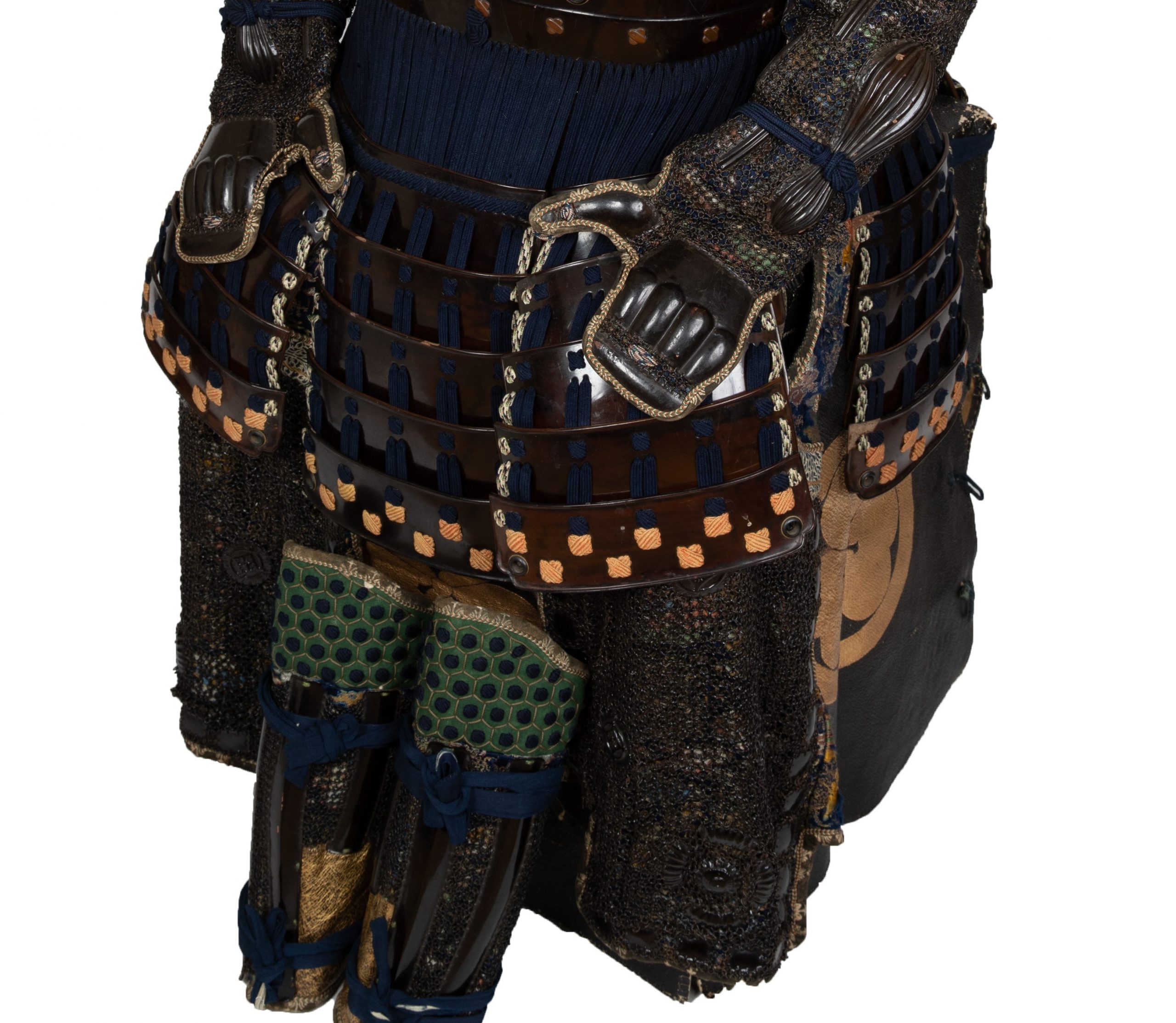
■Suneate (Shin guard):
The Kikkou (亀甲, turtle’s shell) pattern is used for the cloth of the Suneate (脛当). It is a continuous geometric pattern connecting regular hexagons up and down. A theory says that this design was brought from China and the Korean Peninsula during the Asuka (592-710) and Nara periods (710-794). A proverb says turtles live long lives; therefore, turtle and turtle’s shell pattern represent longevity. In addition, as this continuous hexagonal pattern does not get out of its shape, it is said people wished for eternal prosperity by using this design.
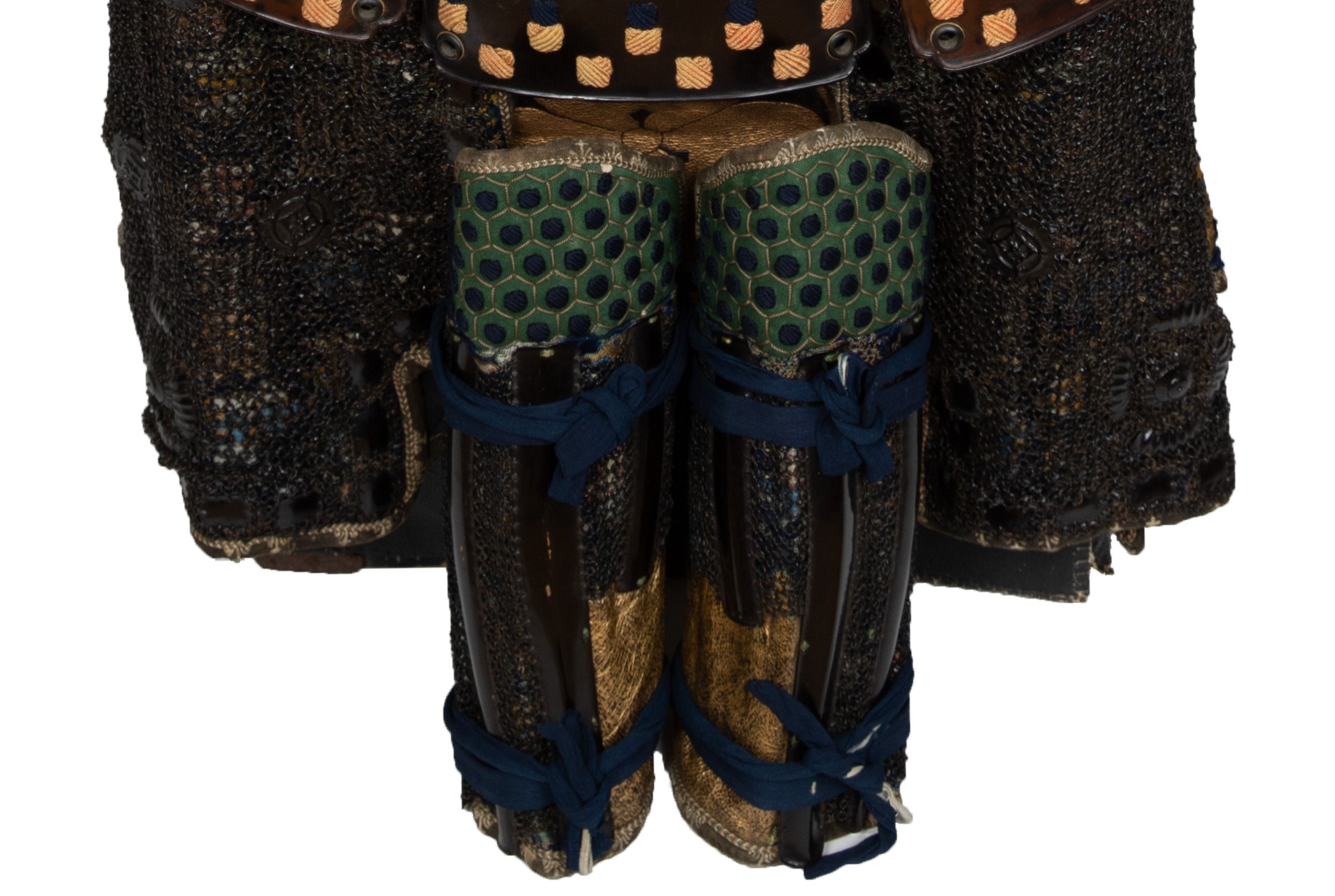
■Kacchu-Hitsu (Armor box):
You would find a golden mark is designed on the left and right sides of the box. This family crest is the same one as the Fukikaeshi and Gyō-yō.
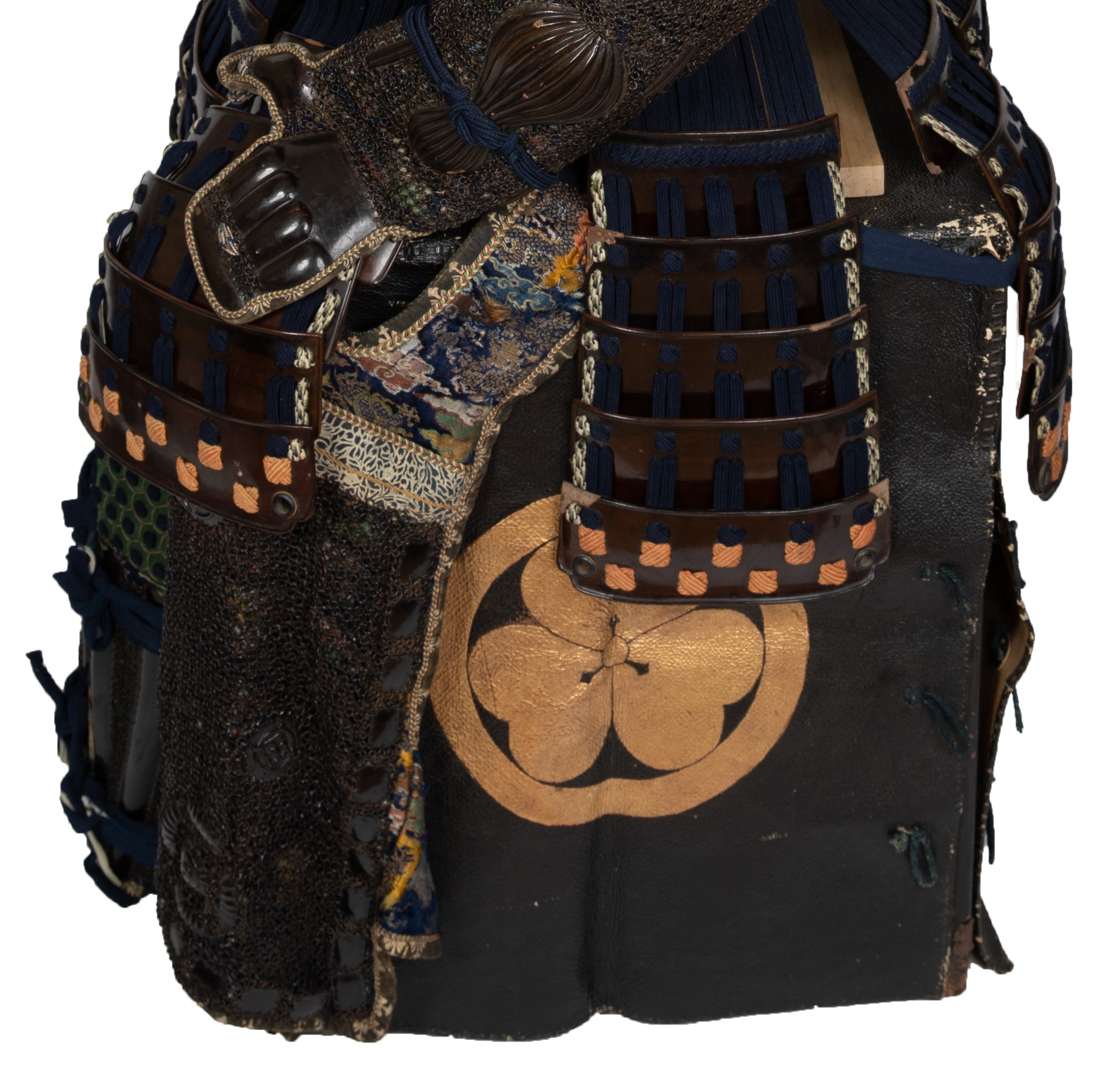
【About us】
Samurai Museum is located in Tokyo, Japan, exhibiting antique artifacts related to the Samurai history. Samurai Museum Shop is the place for those who are interested in Japanese culture and craftsmanship. We deal with antique Samurai swords/armor, traditional crafts made in Japan and so on.
【Payment method】
We accept payment through Stripe (Credit card), PayPal, Apple Pay or ChromePay, all of which are secure payment methods. Also, you don’t need to make an account on Stripe for the checkout. If you prefer other payment method, please contact us. You may either pay in JPY, USD, AUD, CAD, EUR, CHF or GBP. The price is set in Japanese Yen. Prices in other currencies are automatically calculated based on the latest exchange rate.

【Shipping duration】
We normally ship via EMS (Express Mail Service) provided by Japan Post. It usually takes at least 5-14 days to deliver the package after you place an order. We offer Free International Shipping as long as we can ship your order by EMS. If you prefer other shipping carriers, please contact us.
We will inform you of the order’s tracking number via email. Please make sure you fill out your valid email address correctly.
*Please keep in mind that due to the spread of COVID-19, there might be possible delays in delivery. If you like to make sure if EMS shipping is available to your country, please contact us.

【How to make sure the condition】
Please keep in mind that what you are going to purchase is an antique item. We uploaded high resolution photos for you to check its condition thoroughly. If you like to see more photos with different angles, please feel free to contact us. We will be happy to send them to you so that you can make informed decision. It is essential for us to know that you are happy with your choice of a sword. and we are prepared to use the best of our ability to serve you.
【How To Contact Us】
Please contact us through email, Facebook Messenger or Live Chat if you have any questions. You can find each icon on the right side of the website. Please click one of them to reach us. We will reply to you within 1-2 business days.
【How To Preserve Antique Samurai Armor】
Dryness, humidity, and bad ventilation might deteriorate the condition of antique Samurai armor. The best temperature to preserve Samurai armor is around 20℃ in Celsius, and humidity should be about 60%. Direct sunlight should be avoided. We recommend storing armors in a room with good ventilation. If you like to display them outside the boxes for a prolonged time, we suggest using a glass case in order for dust not to be accumulated easily. In case you don’t use a glass case, please make sure to regularly dust off from the armor by using a soft brush made of delicate cloth or brush for painting.
If you like to know more about the preservation of this armor, please feel free to contact us.


